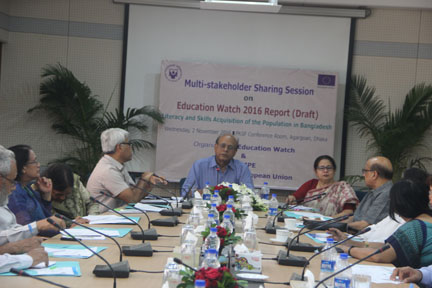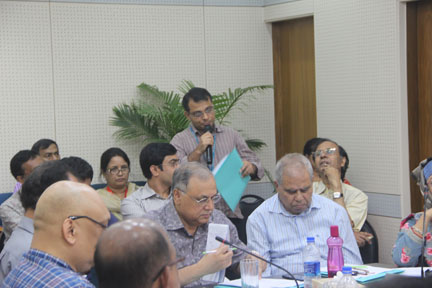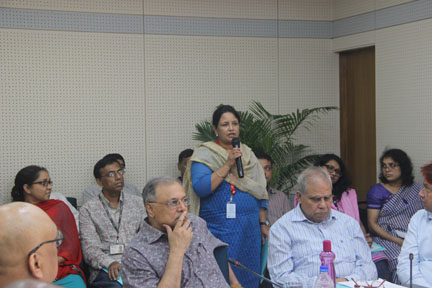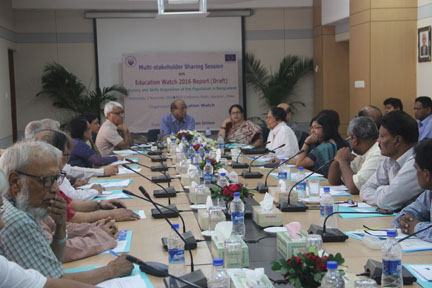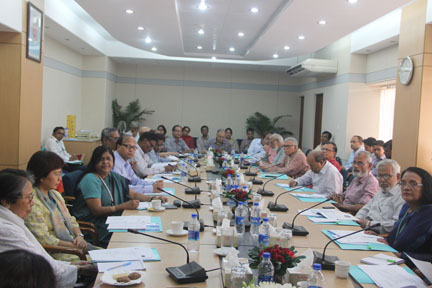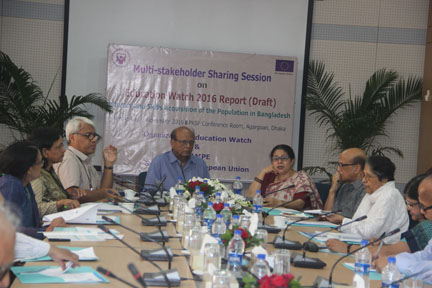A Multi-stakeholder Sharing session on Education Watch 2016 Report (Draft) on Literacy, Skills and Lifelong Learning: State of the SDG4 in Bangladesh was held at PKSF Conference Room Agargaon, Dhaka on 02 November, 2016, chaired by Dr. Manzoor Ahmed, Vice Chair of CAMPE and Professor Emirates, BRAC University. The meeting turned out to be a real ‘multi stakeholder’ one with the participation of representatives from concerned Government and donor agencies, teachers, researchers and practitioners.
The main objective of Education Watch 2016 was to review the status of literacy and life-skills in the context of Basic Education and Life-Long Learning as stated in the framework adopted in the World Education Forum 2015 and look into the progress made in Bangladesh over the past one-and-a-half decade. This study has also identified the gaps in current provisions and help formulate policies for future development about how literacy skills can be made the foundation of lifelong learning.
Mr. Samir Ranjan Das, Principal Researcher, Education Watch Study Team 2016 in his presentation stated:
• Statistically significant improvement in literacy rate was evident over a period of 14 years. Literacy rate was 41.4% in 2002 on the other hand in the year 2016 it is 51.3%. Increase per year was very slow, less than 1%.
• Study shows that, literate at an advanced level 26.0%; literate at initial level 25.3% and Semiliterate 9.8%. 39.0% found as Non-literate.
• The proficiency level was highest in reading (59.1) that followed by writing (46%) and numeracy (44%). The lowest performance was found in application of these skills in the employment market which was 37.2% only.
• For poorest House Holds literacy rate is 33.6% on the contrary, for richest it is 69%
• Significant use of ICT was observed that that contributed in improved reading
• Among the user of ICT, about 86.4% use social media.
• No gender difference was observed in Dhaka, Rajshahi, Khulna, Barisal, and City Corporations
• Males were ahead of females in Chittagong, Sylhet, Rangpur, and Municipalities
• Significant increase was observed in each of the four components of literacy. Statistically significant improvement in literacy rate was noticed in all six rural divisions
• Same way, decrease in literacy rates in two urban strata were also significant. The study identified that males were responsible for decrease in urban literacy rates
Lastly it was summed up that, a coordinated atmosphere of school education, skills development programs, and healthy use of ICT may help Bangladesh to proceed forward for achieving SDG and Education 2030 goals.
Comments from the floor:
• There should be few specific direction in Education Watch report suggesting how to overcome the challenge of education
• A multi regression between wealth ranking and Education related variable will be very effective to sort out which factor contribute more.
• The literacy test environment may be further detailed.
• Explanation is needed for why literacy rate progress is slow and declining in some area.
• Not only participation in vocational training but also training quality should be addressed.
• Policy recommendation should be included for further advocacy.
Education Watch Report 2016 will be launched officially on December, 2016

